Maharashtrian Chakli recipe, also known as Bhajani Chakli, is one of my favourite Diwali snacks. In Marathi, Bhajani means roasted multigrain flour, and Chakli is a crispy, round spiral snack made from it. Here's my quick and easy Instant Chakli recipe that tastes just like the authentic one.
This Maharashtrian bhajani chakli recipe gives you super crispy chakli that's ready within an hour and requires fewer ingredients. It is perfect for your Maharashtrian Diwali platter with Pakatale rava ladoo and Nevri, or even as a tea-time snack like verki-puri.
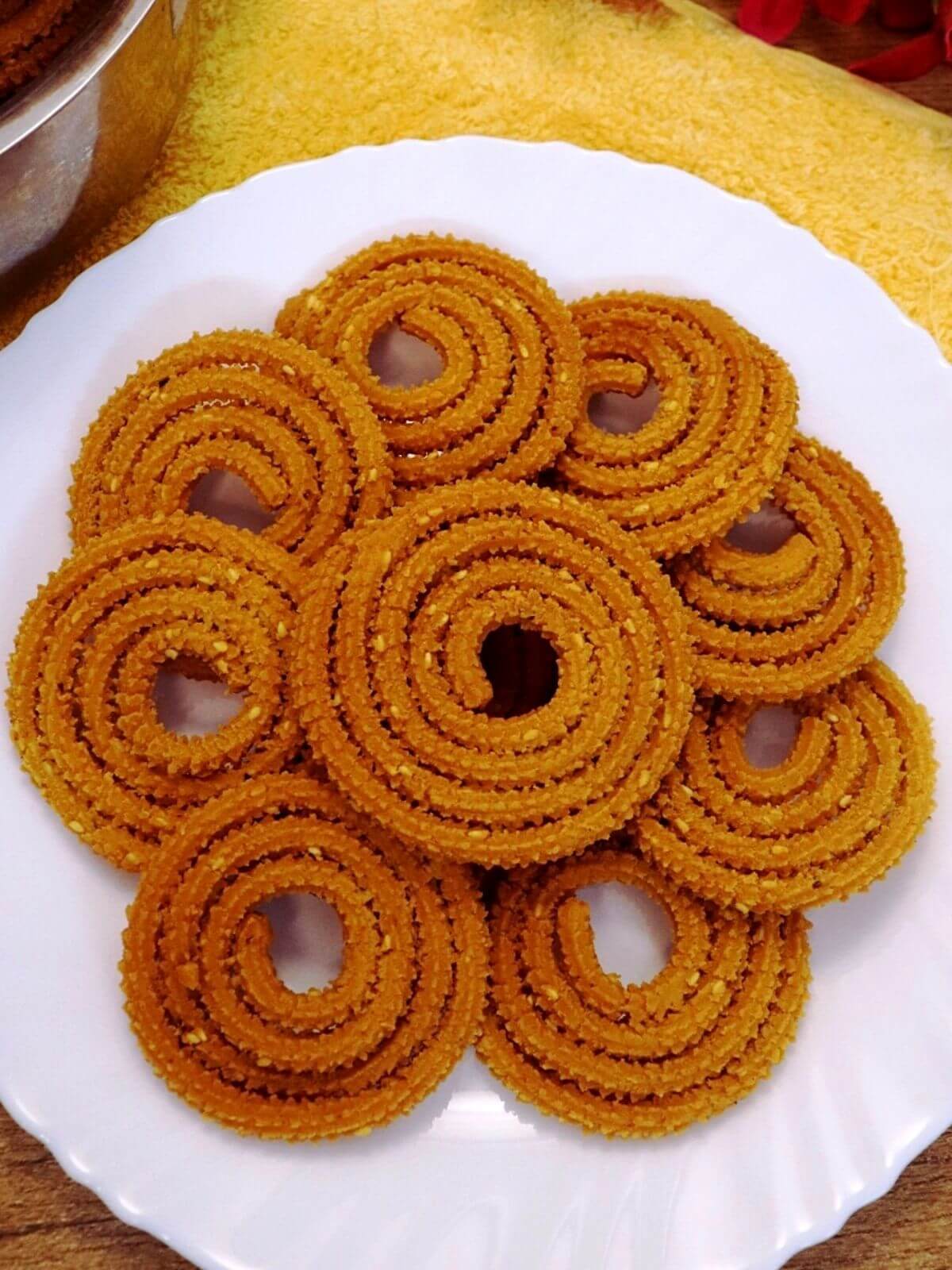
I love how easy this Maharashtrian-style chakli recipe is. Traditionally, making bhajani takes time, as the flour is roasted, ground in a mill, and prepared days in advance. With this easy recipe, you can make it from start to finish within an hour. More Diwali recipes that you might like are our Instant Mawa, Besan Ladoo, and Peanut Ladoo.
What is Chakli?
Chakli, also known as Murukku in South India, is a crunchy, savoury, spiral-shaped, deep-fried Indian snack made mostly during Diwali, Ganesh Chaturthi, and other festivals. It is made from a savoury dough of rice and lentil flour, along with spices.
This Maharashtrian Bhajani Chakli Recipe Is So Good!
Every Diwali, my mom made this Maharashtrian bhajani chakli at home. Its crispy, savoury flavour perfectly balances the festive sweets.
This Instant Maharashtrian Chakli recipe is such a lifesaver. You get to enjoy the same traditional taste but with half the work.
No soaking, no long waiting, just grind, shape, and fry. In about 40 minutes, you'll have super crispy, light, and non-greasy, and taste just like the authentic one we all love. Simple, quick, and so delicious.
Quick Look: Maharashtrian Chakli Recipe
- Prep Time: 20 minutes
- Cook Time: 20 minutes
- Total Time: 40 minutes
- Servings: 35 Calories: ~164 kcal per serving (based on nutrition panel)
Jump to:
Chakli Bhajani Ingredients
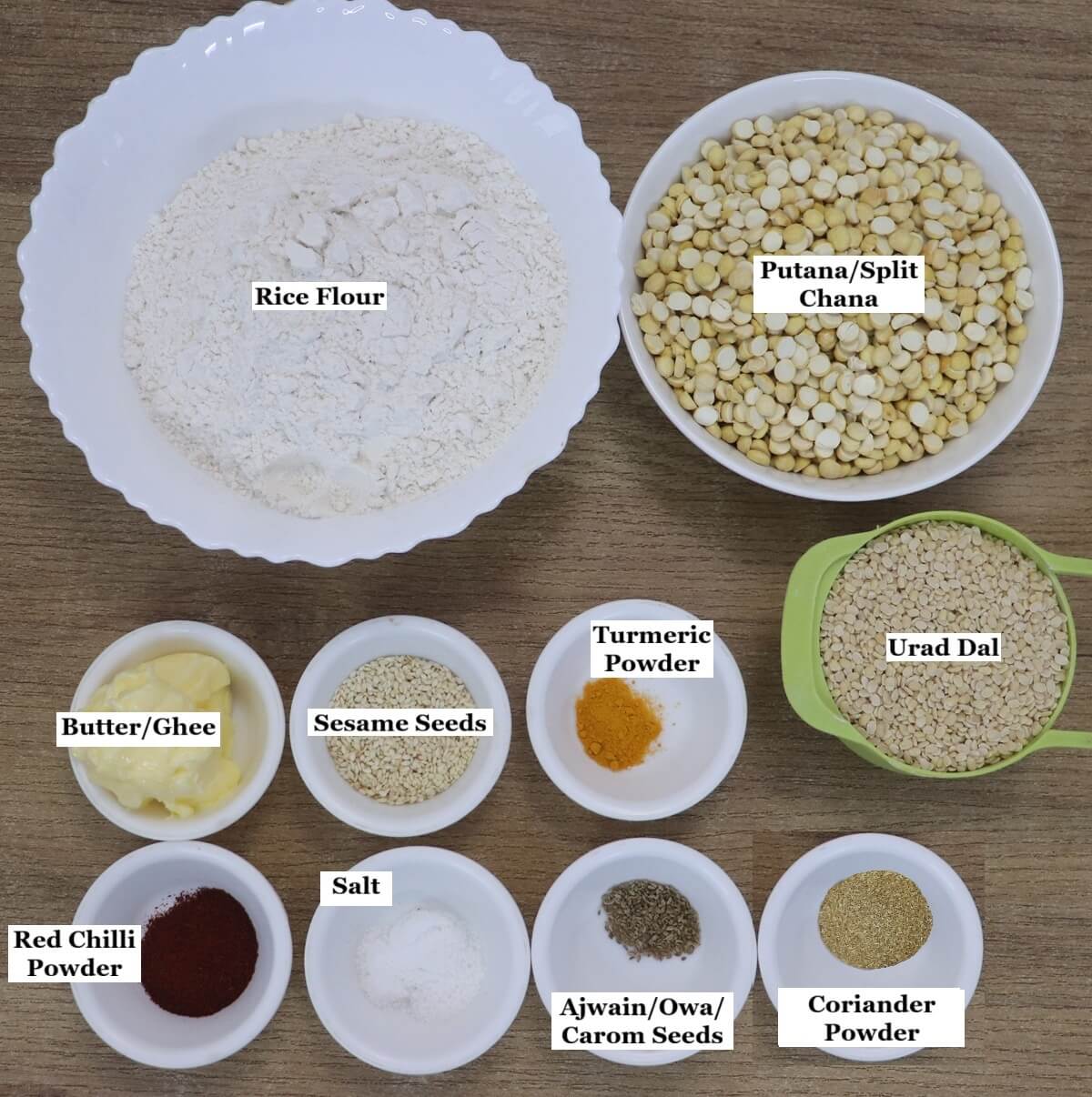
See the recipe card at the end of the post for full ingredients, quantities, and a printable version.
- Rice flour: Rice flour is easily available in stores. However, you can also prepare rice flour at home. Clean rice as we did with urad dal in the recipe. Then roast, cool, and grind it to a fine powder.
- Urad dal/black gram dal (skinless): You can make it without it, but you will miss the authentic Maharashtrian flavour.
- Split gram lentils/chana/putana/dalya: It's different from Chana Dal. It's split chana that gives a nice flavour and makes them light.
- Spice powders: spicy red chilli powder, turmeric, coriander powder, and cumin powder.
- Butter: It gives the best flavour. However, you can substitute it with ghee or oil. While measuring butter, make sure it is in a semi-solid form. Check the ingredient image.
Equipment Needed
The Chakli Maker with a star-shaped disc is an important tool used to create the spiral shape and distinctive star-shaped spike design. You can easily purchase them at your local kitchenware shop or online marketplace.
How to make Maharashtrian Bhanjani Chakli
Prepare the Bhajani Flour
1) Take urad dal/black gram dal. To clean the urad dal, dampen a clean cotton cloth or kitchen towel with water. Gently rub the urad dal against the cloth to remove any dirt (images 1,2, & 3).
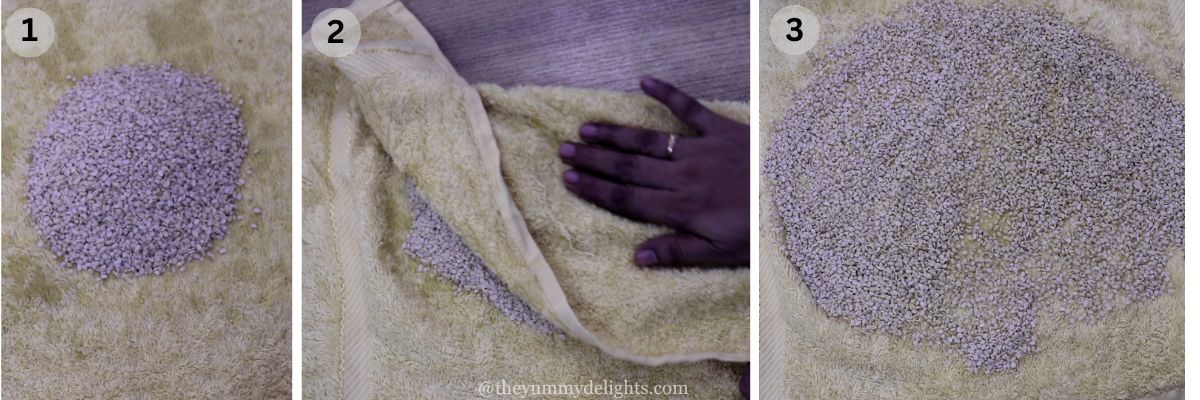
2) Dry roast chana/putana in a heavy-bottomed pan over low-medium heat until fragrant. Avoid browning them (images 4 & 5). Transfer the roasted chana/putana to a plate and let it cool completely.
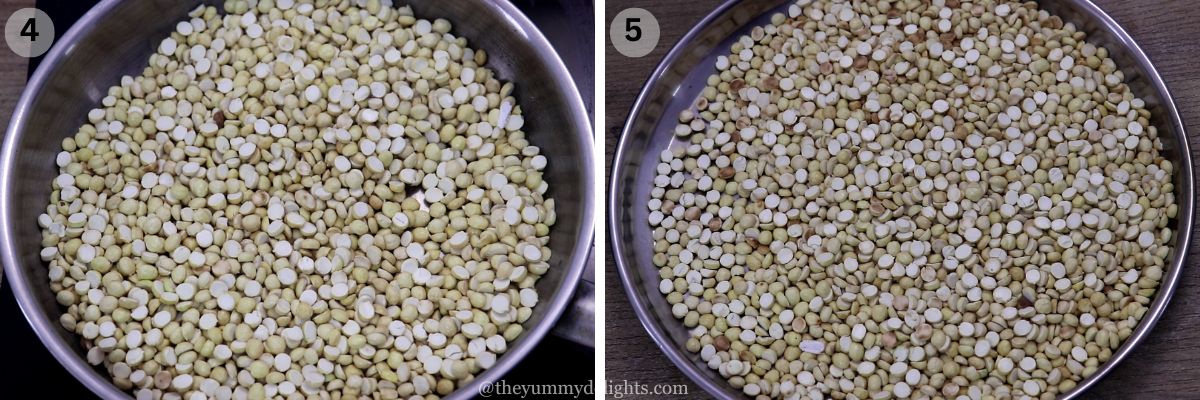
3) Next, add urad dal to the same pan (image 6) and dry roast it over low-medium heat until fragrant. Remove the urad dal from the pan as soon as it starts to change colour slightly. Transfer it to the plate with the chana/putana and let it cool completely (image 7). Do not roast until golden.
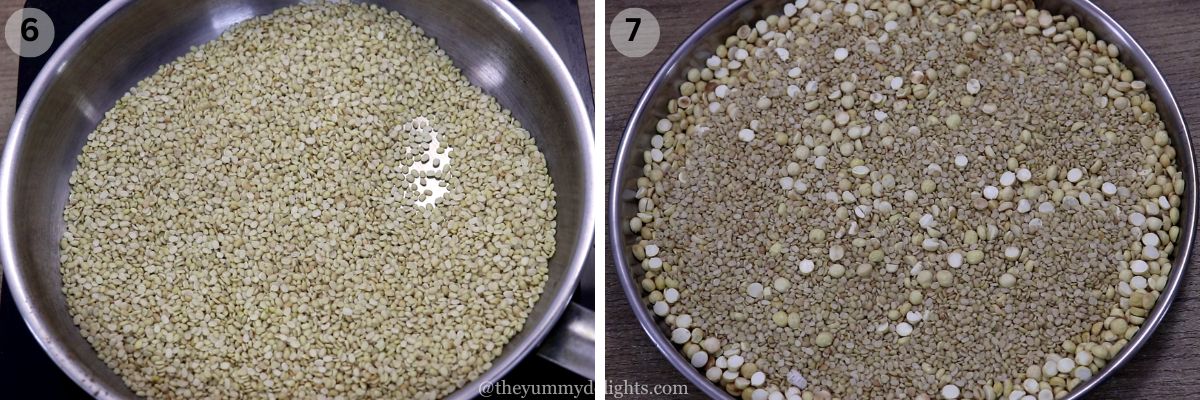
4) To make bhajani or bhajani flour, you can either have the bhajani ingredients ground at a mill or grind them yourself in a mixer. Don't fill the mixer jar more than a quarter (¼th) full with the ingredients (image 8). Grind the ingredients into a fine powder (image 9).
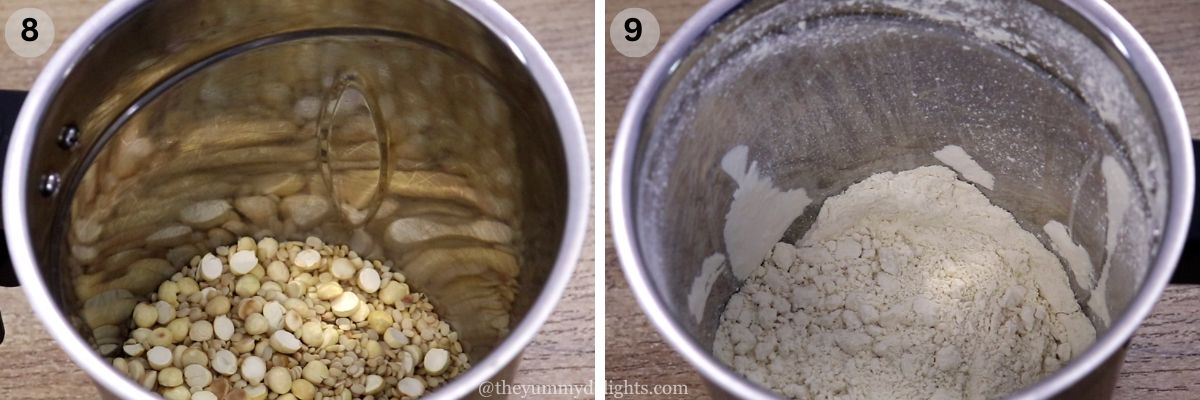
5) Sift the ground flour to get rid of any coarse particles (image 10). Then, do the same with the rest of the roasted bhajani ingredients (image 11).
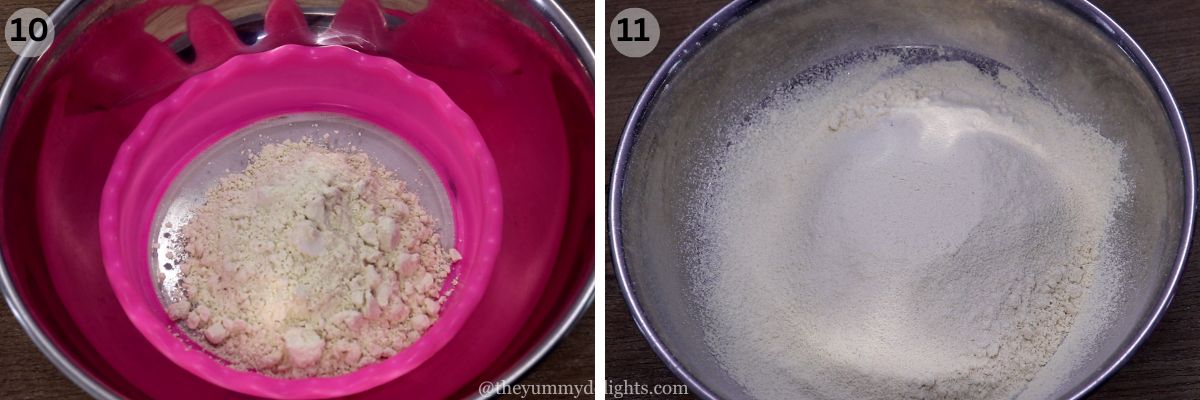
6) Sift rice flour and combine it with the other ingredients (image 12). Homemade bhajani flour is ready (image 13). Store the bhajani flour in an airtight container for up to 3 months.
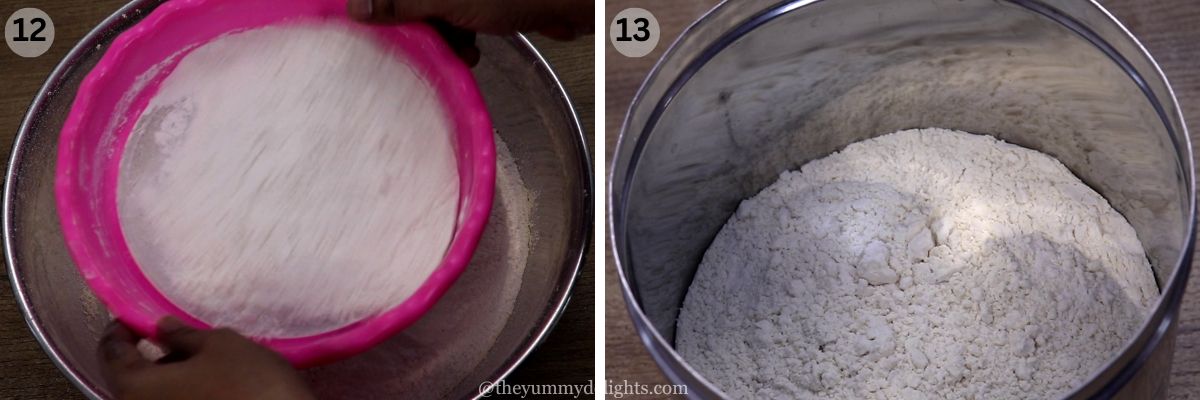
Make the Dough
7) To make dough, combine 4 cups of bhajani flour, salt, spicy red chilli powder, sesame seeds, carom seeds (ajwain), turmeric, coriander powder, and cumin powder in a big bowl/plate (images 14 & 15). Mix gently with a spoon. You can add asafoetida for authentic bhajani flavour.
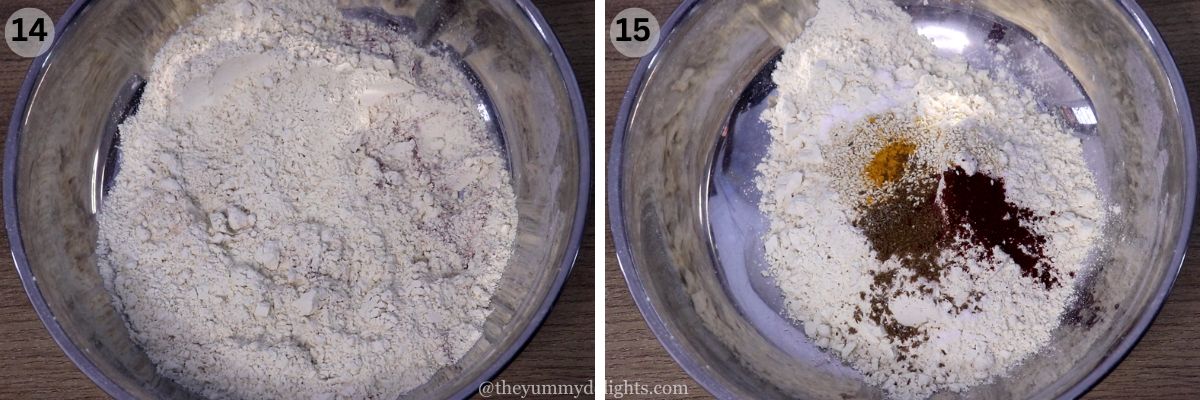
8) Heat butter in a tadka pan. Add hot butter (called moyen or mohan) to the flour (image 16). Combine with a spoon first. Be careful, as the mixture will be hot. Now slowly rub the butter into the flour with your fingers for 3-4 minutes. This will make the bhajani chakli crispy. Press the flour firmly with your hands to check if it holds together (see image 17). If it doesn't, then add 1 teaspoon of hot butter and combine.
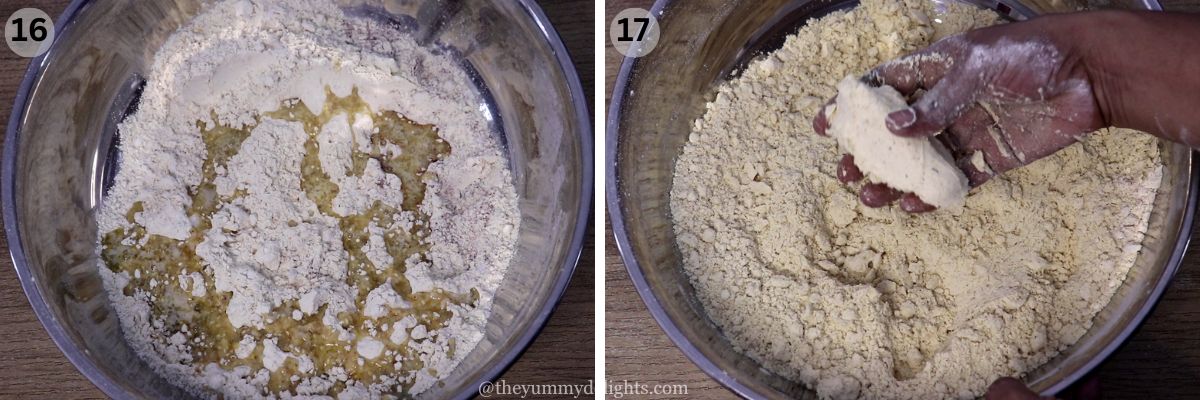
9) Add hot water gradually, starting with a small amount and mixing with a spoon. Then add more hot water in batches and combine. Your bhajani dough will look like this (image 18).
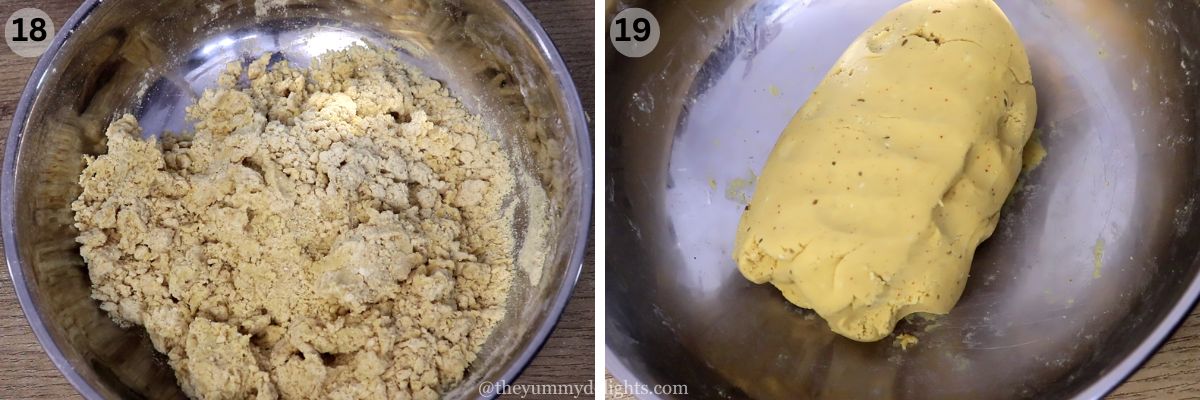
10) If the heat is tolerable, knead the dough with your hands until it forms smooth, crack-free, and firm dough (image 19). If the dough is too hot to handle, cover it and let it rest for 5 minutes before kneading. Gradually add 1-2 teaspoons of water at a time while kneading. Ensure the dough is smooth and stiff. Let it rest for 15 minutes. Meanwhile, prep the chakli maker, grease it with oil (only one time), and heat the oil.
Making Maharashtrian Chakli
12) Heat enough oil in a heavy-bottom pot/pan over medium heat to fry bhajani chakli.
13) Take a small piece of the dough. Cover the remaining dough. Roll it into a cylindrical shape with your hands (image 20). Then, insert it into the chakli maker (image 21) and close it (image 22). Check out the video for more details.
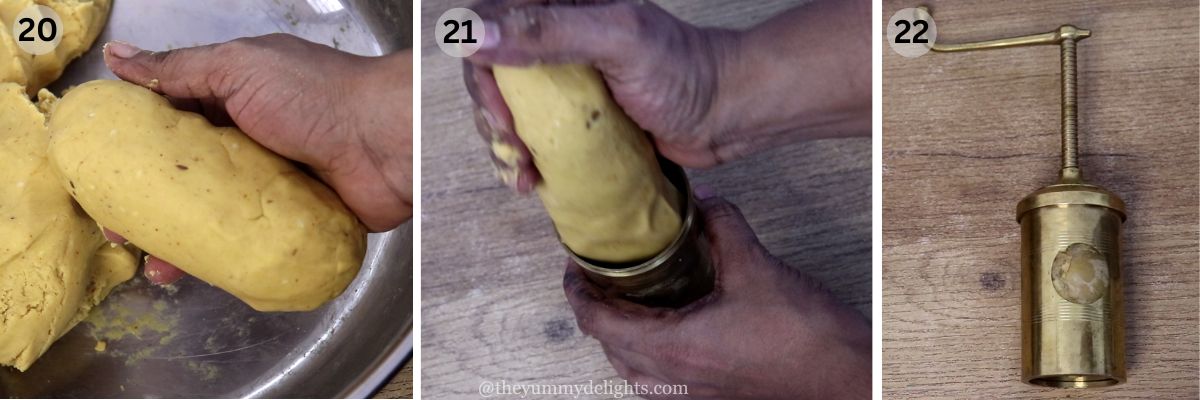
14) Make a spiral shape with 3-4 rounds (images 23 & 24). Join the end to the closest spiral (image 25). If your dough is right, it will not break while shaping, and you will get those beautiful spikes.
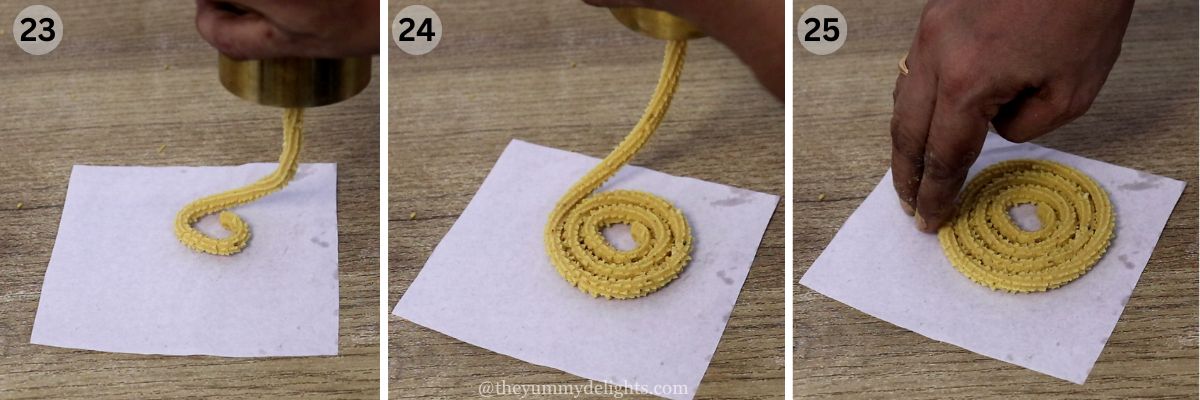
15) If your spiral shape breaks and you cannot make it, sprinkle some water on the dough, knead it again, and start making it.
16) If you are making chakli for the first time, I suggest making only one and frying it. Let it cool down and taste it. If it is too hard, add more butter to the dough and knead it again. If it is soft/not crispy or absorbs oil means you have added more water. Add more rice flour to the dough and knead.
17) If the chakli breaks in oil, it means there is too much butter in the dough. Add more rice flour to the remaining dough and knead it.
Deep Frying Bhajani Chakli
18) To fry, heat oil over medium heat. Avoid lowering the heat throughout the frying process. If you're a beginner, gently place it on a slotted spoon (image 26), then slide the spoon to release it into the oil. (images 27 & 28).
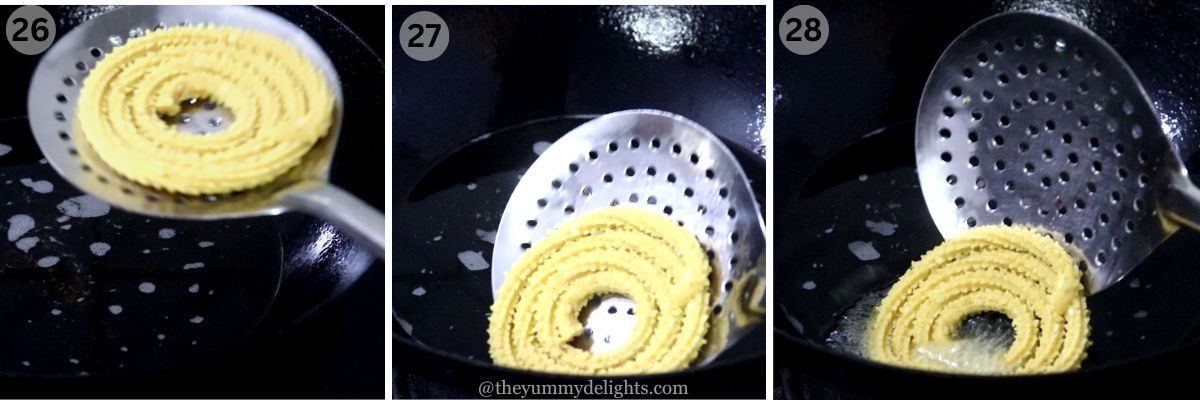
19) Let it sit undisturbed for a minute or until the shape has set. Then, carefully flip it over and continue frying. Initially, when frying chakli, the hot oil will produce a lot of bubbles (image 29). When it cooks, the bubbling will subside (image 30).
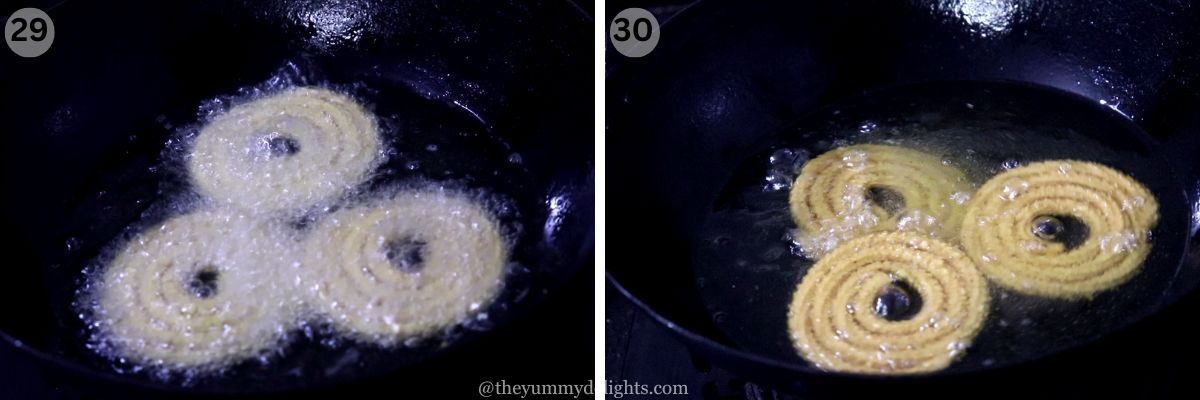
20) Fry only 2-3 at a time, depending on the size of the pan or kadhai. Avoid overcrowding the pan. Once the bubbling has significantly reduced, the chakli is golden brown and crispy, remove and set aside on a big strainer or paper towel-lined plate to remove excess oil (images 31 & 32). Then fry the next batch.
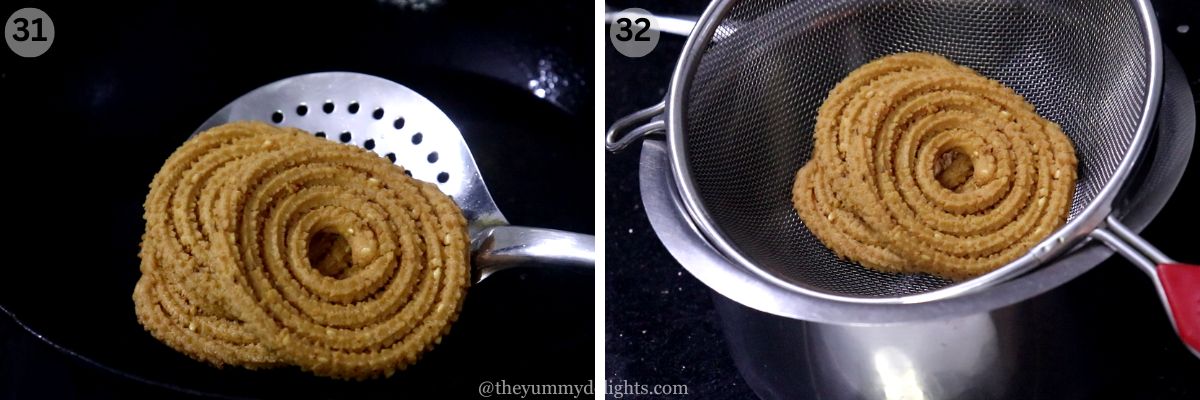
21) Once cooled, you’ll notice the chakli is extra crispy and light, with a beautiful hollow centre. Give this recipe a try. Once cooled, store them in an airtight container. It will remain fresh for up to 15 days. If you use oil instead of butter, they can last for about a month.
Tips to make Perfectly Crispy Maharastrian Chakli
- Knead smooth, crack-free, and stiff dough. It should be soft but firm enough to hold its shape.
- If the dough is too hard, the chakli will break while pressing. If it's too soft, it will absorb more oil and lose crispiness.
- If the chakli breaks while shaping, the dough is too dry. Sprinkle a little water, knead again, and continue.
- For frying, heat oil on a medium flame. Drop a small dough piece to test if it should rise in a few seconds. If it rises too quickly and browns, the oil is too hot. If it takes a long time to rise, the oil is not hot enough.
Recipe FAQs
If it breaks while shaping, it means the dough is dry. Sprinkle some water on the dough, knead it again, and start making it. Do not add too much water.
When stored in an airtight container, it stays fresh for 2 weeks. I have used butter in the recipe. But if you make it with oil, it will stay fresh for a month at room temperature.
Yes, baking is a healthier alternative. Make sure to preheat the oven to 180°C (350°F) for 15 minutes. Bake it for 7 minutes, then flip it and bake for another 10 minutes or until brown. It took a total of 17 minutes to bake. But every oven is different, so keep an eye on it after 15 minutes.
Bhajani is made by rinsing, drying, and roasting a mix of rice and lentils over 2-3 days, then grinding it into a fine powder at a mill. This ground flour is then mixed with spices, kneaded into a dough, shaped into spirals, and deep-fried. The process takes time, but this homemade bhajani chakli flour is better than the store-bought ones. I have shared a quick bhajani recipe, ready in 30 minutes, in this post.
Recipe Card
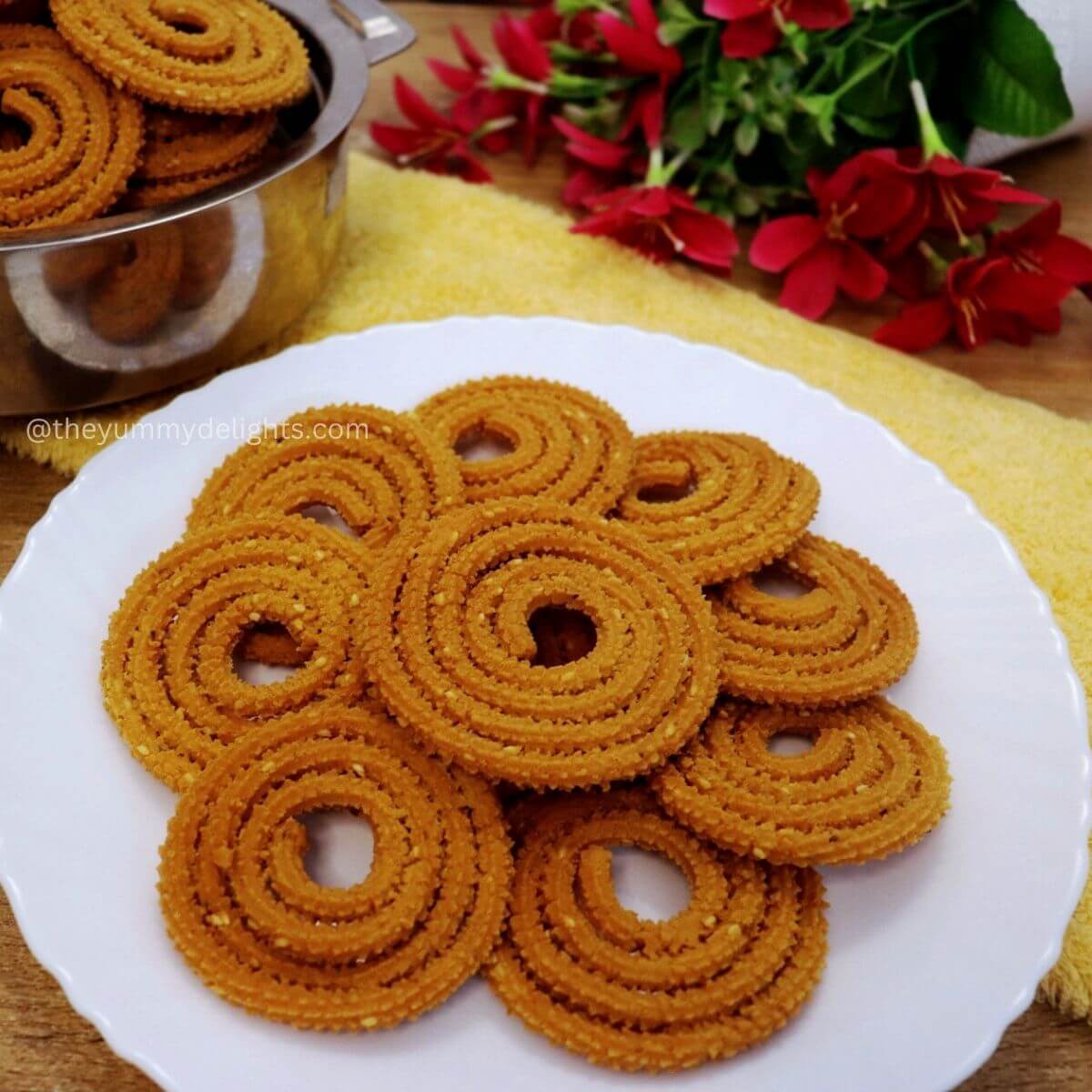
Maharashtrian Chakli Recipe
Video

Equipment
- 1 Heavy bottom pan
- 1 Mixing bowl
- 1 Chakli Maker
Ingredients
To make Bhajni Flour
- 3 cups of rice flour
- 1 cup Urad dal/black gram dal, skinless
- 2 cups Split gram lentils/chana/putana/dalya Not chana dal
To make Bhajani Chakli
- 4 cups of the prepared bhajani flour
- salt to taste
- 1.5 teaspoon spicy red chili powder
- 3 teaspoon sesame seeds
- ¼ teaspoon carom seeds ajwain
- 1 teaspoon coriander powder
- ¼ teaspoon turmeric
- ½ teaspoon cumin powder
- 3 tablespoon butter, semi-solid form (substitute: Ghee/Oil)
Instructions
Prepare the Bhajani Flour (Chakli Flour)
- To clean the urad dal, dampen a clean cotton cloth or kitchen towel with water. Gently rub the urad dal against the cloth to remove any dirt.1 cup Urad dal/black gram dal, skinless
- Dry roast chana/putana in a heavy-bottomed pan over low-medium heat until fragrant. Avoid browning them. Transfer the roasted chana/putana to a plate and let it cool completely.2 cups Split gram lentils/chana/putana/dalya
- Next, add urad dal to the same pan and dry roast it over low-medium heat until fragrant. Remove the urad dal from the pan as soon as it starts to change color slightly. Transfer it to the plate with the chana/putana and let them cool completely.
- To make chakli bhajni, you can either have the bhajani ingredients ground at a mill or grind them yourself in a mixer. To grind it at home in a mixer, don't fill the mixer jar more than a quarter (¼th) full with the ingredients. Grind the ingredients into a fine powder and sift the ground flour to get rid of any coarse particles. Then, do the same with the rest of the roasted bhajani ingredients.
- Sift the rice flour and combine it with the other ingredients. Bhajani flour is ready. Store the bhajani flour in an airtight container for up to 3 months.3 cups of rice flour
Make the Dough
- To make Chakli, combine 4 cups of flour, salt, red chili powder, sesame seeds, coriander powder, carom seeds (ajwain), turmeric, and cumin powder in a big bowl/plate. Mix gently with a spoon.4 cups of the prepared bhajani flour, salt to taste, 1.5 teaspoon spicy red chili powder, 3 teaspoon sesame seeds, ¼ teaspoon carom seeds, 1 teaspoon coriander powder, ¼ teaspoon turmeric, ½ teaspoon cumin powder
- Heat butter in a tadka pan. Add hot butter (called moyen or mohan) to the flour. Combine with a spoon first. Be careful, as the mixture will be hot. Now slowly rub the butter into the flour with your fingers for 3-4 minutes. This will make the chakli crispy. Press the flour firmly with your hands to check if it holds together.3 tablespoon butter, semi-solid form (substitute: Ghee/Oil)
- Add hot water gradually, starting with a small amount and mixing with a spoon. Then add more hot water in batches and combine. Your dough will look like this.
- If the heat is tolerable, knead the dough with hands until it forms smooth, crack-free, and firm dough. If the dough is too hot to handle, cover it and let it rest for 5 minutes before kneading. Gradually add 1-2 teaspoons of water at a time while kneading. Ensure the dough is smooth and stiff. Taste the dough and adjust salt or chilli powder as per taste. Let it rest for 15 minutes. Meanwhile prep the chakli maker, greae it with oil (only once before starting), and heat oil.
Making Maharashtrian Chakli Recipe
- Heat enough oil in a heavy bottom pot/pan over medium heat.
- Take a small piece of chakli dough. Cover the remaining dough. Roll it into a cylindrical shape with hands. Then, insert it into the chakli maker. Close it. Check out the video for more details.
- Make spiral shape with 3-4 rounds. Join the end of it to the closest spiral. If your dough is right, chakli will not break and you will get those beautiful spikes.
- If your spiral shape breaks, sprinkle some water on the dough, knead it again, and start making it.
- If you are making chakli for the first time, I suggest making only one and frying it. Let it cool down and taste it. If it is too hard, add more butter to the dough and knead it again. If it is soft/not crispy or absorbs oil means you have added more water. Add more rice flour to the dough and knead.
- If the chakli breaks in oil, it means there is too much butter in the dough. Add more rice flour to the remaining dough and knead it.
Fry the Chakli
- To fry chakli, heat oil over medium heat. Avoid lowering the heat throughout the frying process. If you're a beginner, gently place the chakli on a slotted spoon, then slide the spoon to release it in hot oil.
- Let it sit undisturbed for a minute or until the shape has set. Then, carefully flip it over and continue frying. Initially, when frying chakli, the hot oil will produce a lot of bubbles. As the chakli cooks, the bubbling will subside.
- Fry only 2-3 at a time, depending on the size of the pan. Avoid overcrowding the pan. Once the bubbling has significantly reduced, the chakli is done. Remove and set aside on a big strainer or paper towel-lined plate to remove excess oil. Then fry the next batch.
- Once cooled, you’ll notice the chakli is extra crispy and light, with a beautiful hollow center. Once cooled, you can store the them in an airtight container. It will remain fresh for up to 15 days. If you use oil instead of butter, it can last for about a month.
Notes
- If chakli breaks while shaping: Dough is dry. Sprinkle a little water, knead again.
- If it is hard after frying, add more butter and knead.
- Chakli is too soft/absorbs oil, then the dough has extra water, add rice flour and knead.
- Chakli breaks in oil, too much butter is added to the dough, add rice flour, and knead.
- Chakli absorbs oil, then check the oil temperature. Drop a small dough piece. If it rises slowly, the oil is not hot enough. If it rises too fast & brown,s the oil is too hot.
- Add a pinch of asafoetida for flavour.
- Knead smooth, stiff dough, soft but firm.
- Don't overcrowd while frying. Cool completely before storing in an airtight jar.
Nutrition
Nutrition information is automatically calculated, so should only be used as an approximation.


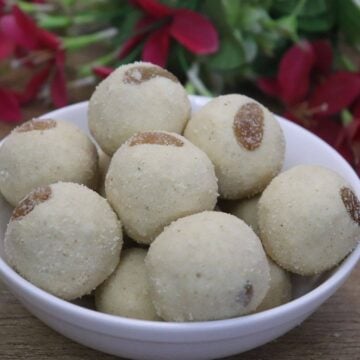
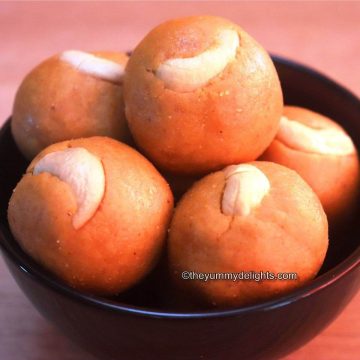
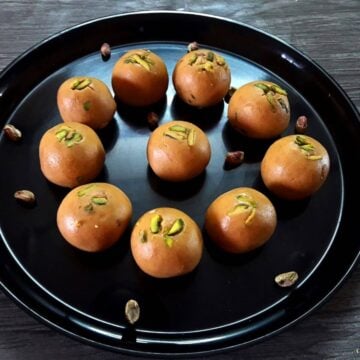
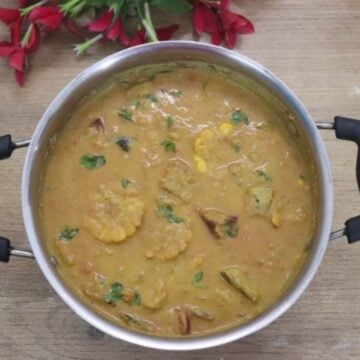
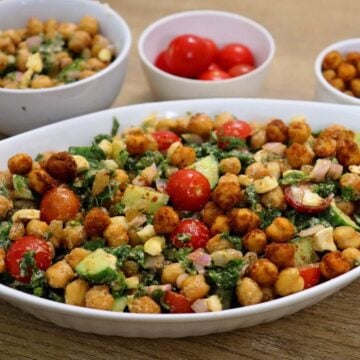


Preeti
This is my favorite bhajani chakli recipe. I make them every Diwali, and my celebration is incomplete without them. They come out perfectly crispy and delicious every time. Try this recipe this Diwali, you will love it.
roxane
This was such a useful article, I’m sharing it.